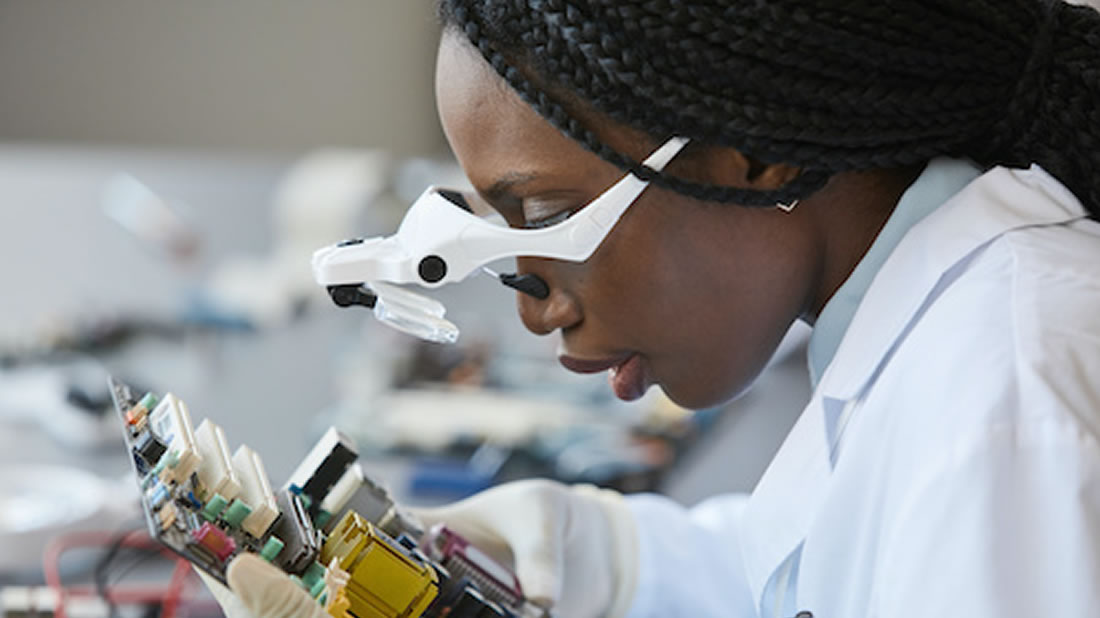Report finds persistent STEM career exposure gaps for women
Key points:
- Female students would benefit from targeted efforts to increase STEM options
- 3 free STEAM education resources to nurture student curiosity
- Putting the ‘E’ in integrative STEM instruction
- For more news on STEM learning, visit eSN’s STEM & STEAM hub
Women play a crucial role in filling high-paying, in-demand STEM careers, but they account for just 34 percent of the STEM workforce, according to a new report from YouScience and Ford Next Generation Learning.
The 2024 Female Students and STEM Report reveals that beginning in middle school, female students experience significant STEM exposure gaps that continue through high school.
The report highlights critical insights into career exposure gaps among female students across the nation for a variety of in-demand jobs, and offers actionable solutions to bridge these gaps in the STEM field careers.
The career exposure gap identifies the mismatch between students’ abilities and interests, revealing overlooked career options. This analysis is based on anonymized data from 233,000 female middle and high school students in the United States collected in 2023.
Key highlights from the report show females are experiencing:
- An 87 percent exposure gap in advanced manufacturing careers–a field projected to have 2.1 million unfilled jobs by 2030
- An 87 percent exposure gap in computer and technology professions; this includes careers like computer programmers, software developers, information cyber security analysts, and more
- A 55 percent exposure gap in architecture & construction careers; this is problematic as the housing shortage worsens and the industry’s value is expected to rise 32 percent from $580 billion to $2.4 trillion by 2030
- A 30 percent exposure gap in the health science careers, which include careers in dental, which is experiencing a nationwide worker shortage
- A 22 percent exposure gap in engineering–next-generation skill sets for engineers are critically lacking, risking nearly one in three engineering roles remaining unfilled annually through at least 2030
“The persistent career exposure gaps highlighted in the report underscore a critical need for enhanced guidance and support for female students in STEM-related fields. Our data-driven insights reveal significant disparities that must be addressed to cultivate a diverse and skilled workforce prepared for the demands of the future economy,” said Amy Miller-Weiland, Vice President of Professional Services and Learning and Development at YouScience.
The report offers nine recommendations to help increase female students’ STEM career exposure, including (see all 9 in the report):
1. Aptitude measures–a foundational tool to help students discover their best-fit postsecondary education and career pathways.
2. Career academies–the creation of high school programs focused on specific career fields like: health sciences, engineering, and IT. They allow students to align their education with career aspirations.
3. Collaborative planning between family, educators, and counselors to help students navigate their educational and career journeys.
4. Interdisciplinary education where schools and districts work together to create personalized pathways and integrated programs through the lens of relevant career clusters.
“The solutions outlined in this report must be applied promptly. We can no longer overlook young women who have the aptitude but have not been exposed to these opportunities,” said Cheryl Carrier, Executive Director at Ford Next Generation Learning. “We are now equipped with the knowledge to do better, so we must.”
Addressing the career exposure gap for female students requires aptitude discovery that helps guide each student toward personalized educational and career opportunities that best suit their abilities.
This press release originally appeared online.
